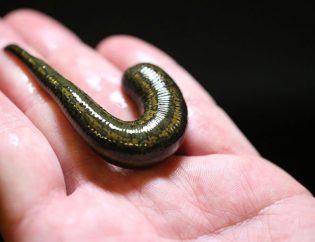Leeches are a type of annelid worm that belong to the class Hirudinea. There are over 700 known species of leeches, and they can be found in a wide range of habitats all over the world. Despite their reputation as blood-sucking parasites, leeches play an important ecological role in many ecosystems and have been used for medicinal purposes for thousands of years.
Physical Characteristics of Leeches
Leeches are elongated, cylindrical worms that are typically between 0.2 and 20 centimeters in length, depending on the species. They have a flattened ventral surface and a rounded dorsal surface, and are typically brown, black, or green in color. Leeches have a sucker at each end of their body, which they use to attach to their hosts.
Leeches have a specialized mouth that contains three jaws, each with a row of sharp teeth. These jaws are used to pierce the skin of their host and suck blood. While many species of leeches feed exclusively on blood, others are predatory and feed on other invertebrates.
Habitats of Leeches
Leeches are found in a variety of habitats, from freshwater streams and ponds to tropical rainforests and even the ocean floor. Some species of leeches are adapted to living in specific environments, such as the digestive tract of amphibians or the gills of fish.
Freshwater leeches are perhaps the most well-known, and can be found in almost any body of freshwater, from small streams to large lakes. These leeches are often found in areas with dense vegetation, where they can easily attach to passing animals or humans.
Leeches in terrestrial habitats are less common, but still exist in some areas, particularly in tropical rainforests. These leeches are often found on the forest floor, where they feed on passing animals.
Leeches in Marine Environments
While many people associate leeches with freshwater habitats, there are also several species of leeches that live in marine environments. These leeches are typically found in shallow waters along the coasts, and feed on the blood of marine mammals and fish.
Some marine leeches are able to survive in extremely hostile environments, such as hydrothermal vents or the deep sea. These leeches have adapted to living in extreme pressure and temperature conditions and often have unique feeding strategies.
In conclusion, leeches are a diverse group of worms that can be found in many different environments all over the world. While some species of leeches are known for their blood-sucking behavior, others are important predators and play an important ecological role in many ecosystems. Understanding the habitats and behaviors of leeches can help us better appreciate the diversity of life on our planet.




